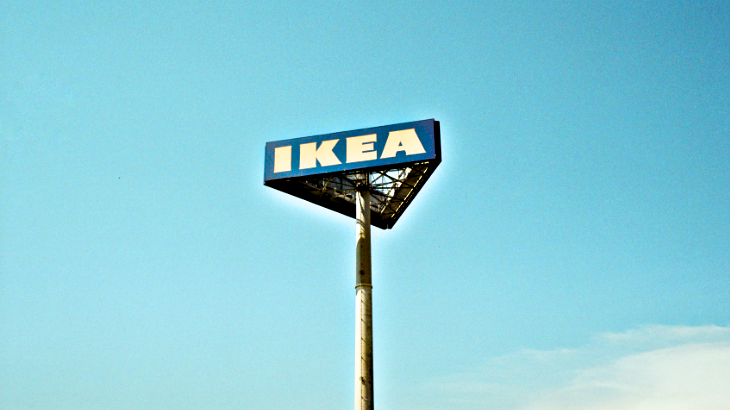IKEA - can Big be a Force for Good?

IKEA is a big beast. Statistics taken from its latest company report show it has 467 stores in 62 markets across the world. It employs 219,000 people. 860 million people visited those 467 stores (many of whom will have travelled in their cars). There are 9,500 products in the IKEA range (with over 1,600 new products launched in FY 2023). It is one of the world’s biggest buyers of wood. It sells more than a billion meatballs in its stores every year.
How can such a big beast be covered in CA-WN’s ‘Business as a Force for Good’ features page? Is IKEA not a significant contributor to the problem of excessive consumption? Surely many of us have reached a state of ‘peak stuff’ – when we can’t fit any more products into our houses.
At a recent Milton Keynes Chambers of Commerce Networking and Sustainability Event, sponsored by IKEA, I learned that the company is well aware of its challenges and its responsibilities. They list their three key sustainability challenges as: unsustainable consumption, climate change and inequality. They concede that responsible forestry management ‘is a very complex topic’.
At the centre of IKEA’s aim to balance revenue growth with positive social impact and environmental protection and regeneration, lies their sustainability strategy which they have named ‘People, Planet, Positive’. David Manser, market manager at the MK store, said at the Chambers Event; “Sustainability really ties into our core values at IKEA and it’s at the heart of everything we do. From the way we transport our goods, to the packaging we use, to energy – sustainability and the need to be a good neighbour and friend to the planet is everywhere. We’ve installed photovoltaic panels on our roof, are moving towards electric vehicles for our deliveries and have facilities in-store to give your old, unwanted furniture a new life. We also want to teach people about the importance of a healthier lifestyle, how to avoid food waste and eat better as a result.’
A selection of IKEA's Sustainability Achievements
Emissions reductions
In its most recent Annual Summary and Sustainability Report for the year 2022/2023 their Parent company, Ingka Group, revealed that between 2016 and 2023 the company has reduced its climate footprint by 24.3%, whilst at the same time increasing revenue by 31%. The reduction comes primarily from switching to renewable electricity sources, introducing energy efficiency and carbon-saving initiatives and switching to electric fleet vehicles.
Low-carbon steel and bio-based glue breakthrough
IKEA have signed up to The Climate Group’s SteelZero initiative and are working with H2 Green Steel to procure low-carbon steel for use in warehouse racking. Steel is estimated to account for at least 7% of global annual emissions. The first low-carbon steel will be in stores by 2026. It will be produced at H2 Green Steel’s plant in Boden, Sweden, which is due to start production in 2025. This plant will use green hydrogen for heating instead of fossil fuels. As for glue, which represents 5% of the total climate footprint within the IKEA supply chain, bio-based glue, recently introduced at their Lithuania factory and due to be rolled out to others, will lead to a significant reduction.
Climate leadership
A report published by InfluenceMap in September 2023 named IKEA, Unilever and Apple as amongst the best in class for businesses lobbying for bold climate action aligned with science. The IKEA business was present at COP28, joining in the call to phase out fossil fuels, halt deforestation, and address the root causes of air pollution. It is a regular signatory to many letters to governments and policy makers across the globe to address the key social and environmental challenges brought on by climate crisis.
Circular strategy
IKEA’s BuyBack and Resell service started 10 years ago in the UK and allows customers to sell unwanted IKEA items back to the retailer to gain credit to use in-store. The Reshop & Reuse service allows customers to buy discontinued products, ex-display and pre-loved items at a fraction of their original price. The Sustainability Report shows that twice as many customers globally used its buyback and resell service in 2023 than in 2022. This service attracted more than 211,000 customers last year. Additionally, customers purchased repair solutions for 45.1 million products in 2023 compared to 42.6 million in 2022. A mattress recycling scheme with the TFR Group has been successful.

Community work and support
IKEA work with a number of charities and local partners. They are partners of the Milton Keynes Chamber of Commerce and David is a Non-Executive Director at Northamptonshire Chamber of Commerce, which allows IKEA to build relationships with the local business community. In 2023, IKEA Milton Keynes piloted a car boot sale and on the back of that success this was repeated in May this year. Further afield, IKEA launched the Let’s Go Zero Competition in schools in 2023 and partners with the homeless charity Shelter – donating £1 for every duvet sold. The IKEA Foundation has joined forces with ClimateWorks Foundation in a philanthropic initiative aimed at providing critical support to workers and communities in the Global South impacted by the transition to renewable energy.

A selection of IKEA's Sustainability Targets
Further reductions in emissions
IKEA plans to reach net-zero emissions by 2050, reducing absolute emissions by at least 90%, without using carbon offsets. These targets, aligning with the globally recognised Science Based Target Initiative (SBTi)’s Corporate Net-Zero Standard, include an admirable commitment to reducing absolute greenhouse gas emissions from its supply chain by at least 50% by 2030 (IKEA works with approximately 1,500 suppliers). The company will report on their progress by the end of this year.
Circular strategy
IKEA also aims to become a fully circular business by 2030 and has partnered with the Ellen MacArthur Foundation to achieve this, which it intends to do by using circular design principles - using renewable materials and/or materials with recycled content to build their products. And taking responsibility for their products at the end of their lives through introducing take-back schemes, free-of-charge recycling, and/or refurbishment.
Electric vehicles and plant-based food
IKEA aims to transition all fleet vehicles to EVs by 2025 and ensure that 50% of main meals will be vegetarian by 2025, and 80% of the remaining 50% won’t be red meat.
To conclude, I left the event hugely impressed by the work IKEA is doing on sustainability. Whilst not denying their vast environmental footprint, I believe that their climate advocacy, their work to develop and promote products, services and solutions to minimize waste, their efforts to raise awareness amongst their customers of healthier eating and sustainable living, make IKEA a force for good. I hope they reach their ambitious environmental targets and I hope they inspire other businesses in the local community to follow their example. There is a difference between ‘looking good’ and ‘being good’. Not only does IKEA look good in terms of its sustainability targets, but perhaps more importantly, it is working hard to be good and take responsibility for its whole industry.
Best IKEA jokes
I heard you can get lawyers at IKEA now
They’re very affordable, but you have to build your own case.
The CEO of IKEA was just elected president in Sweden
He should have his cabinet together by the end of the week.
I went for an interview at IKEA
The manager greeted me by saying, “Come in, make a seat.”

